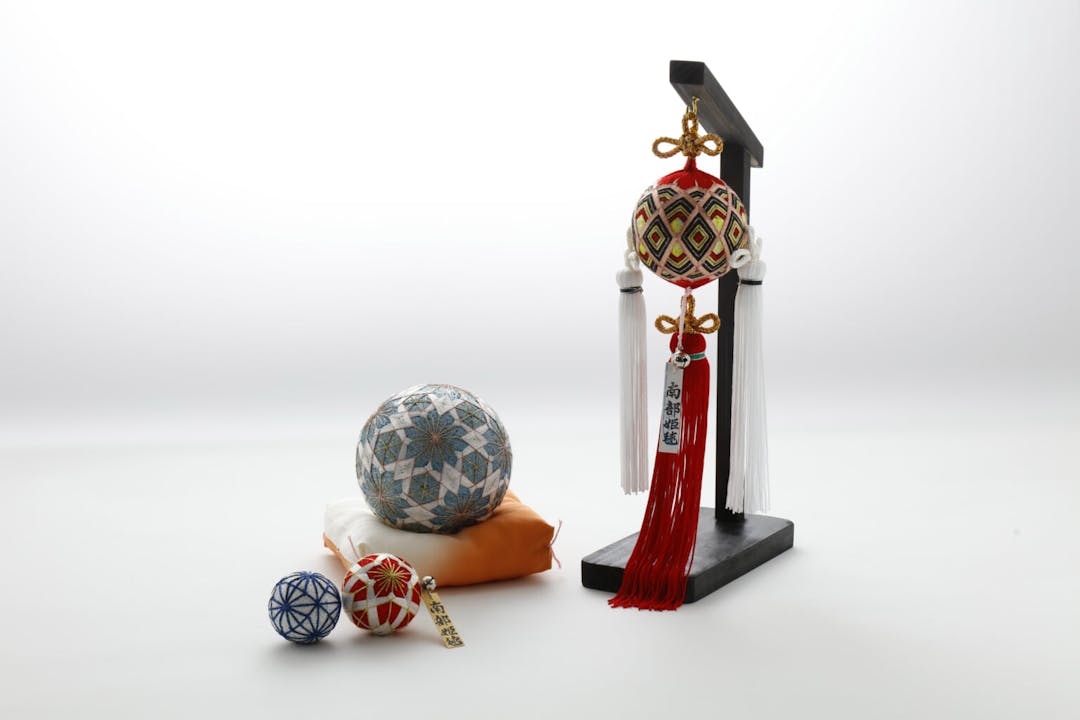
南部姫毬(なんぶひめまり)
Nambu Hime Mari (Princess Ball)
毬は古く平安時代頃から人々に親しまれてきた愛玩品である。
南部姫毬のもとになるのは、綿、ワラビ、モミ殻、ソバ殻などを乾燥させて作った芯である。それを綿でくるみ下地になる色の糸を巻いたものの上に、主に菱形や三角形を組み合わせた色彩豊かな模様の刺しゅうが施される。
「七宝」「繧繝」「双鶴十宝」など、畳のへりに使われる模様の中でも高貴な場所に使われる模様をアレンジして生み出される多様な幾何学模様と色彩はほかに例を見ない独特の美しさがある。
This much-loved toy originated in the Heian period (794-1192).
The base of the Nambu Hime Mari is made from cotton, bracken, and the dried husks of rice and buckwheat. Cotton is wrapped around the core, and colored thread is woven around to create the base shade. Other colors are then added in a diamond or triangular pattern to form this type of bright and colorful embroidery.
Patterns, such as ‘Shippo’ (seven treasures), ‘Ungen’ (multi-layered gradation of one or more colors), and ‘Sokaku-jupo’ (two cranes, ten treasures), which are found on tatami mat borders and other patterns associated with nobility, are arranged to create colorful, geometric designs.

まるで平安朝の十二単を身にまとった姫のような「南部姫毬」
“Yawata” Horses - Sacred horse of “Kushibiki Hachiman-gu”, counted as one of Japan’s three traditional horses.
(画像提供:青森県)
- 文章・画像提供元:青森県庁HP 青森県伝統工芸品